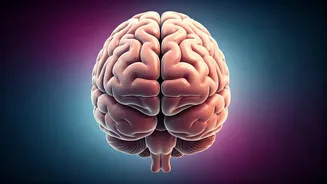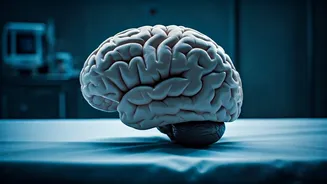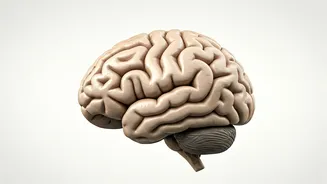The AI Promise
The appeal of AI-powered therapy is undeniable. It provides seemingly instant access to support, available at any time and often at a lower cost than traditional
therapy. For those struggling with anxiety, depression, or other mental health challenges, the convenience and accessibility of a chatbot can be incredibly alluring. One might envision a virtual therapist always ready to listen, offer insights, and provide guidance. The promise of an empathetic, non-judgmental AI that offers personalized support, tailored to individual needs, is a compelling vision. This ease of access can be particularly beneficial for individuals in remote areas or those facing barriers to traditional mental healthcare, such as financial constraints or social stigma. The potential for the AI to learn and adapt based on user interactions is another attractive feature, creating a system that evolves to better meet each user's specific requirements over time.
The Reality Check
Despite the high hopes, the reality of AI therapy often clashes with expectations. The core issue lies in the current limitations of AI in truly understanding and responding to human emotions and complexities. While AI can analyze text and identify patterns, it lacks the nuanced comprehension, empathy, and ability to connect on a human level that a therapist possesses. Users might encounter responses that are generic, repetitive, or even contradictory, leading to frustration and a sense of disconnection. The AI's inability to interpret non-verbal cues, such as tone of voice and body language, further hampers its ability to provide comprehensive support. Without a deep understanding of human experience, AI-driven therapy can feel superficial and ultimately ineffective, unable to address the underlying issues a person is facing. This results in the AI not offering the appropriate support at critical moments, which can impact the overall effectiveness.
Missing Human Connection
At the heart of effective therapy lies the therapeutic relationship, a bond built on trust, empathy, and genuine understanding. This crucial element is currently absent in AI-based therapy. Human therapists are trained to listen actively, ask probing questions, and pick up on subtle emotional cues. They can offer a safe space for vulnerability and provide support that is tailored to the individual's unique circumstances. The ability to build rapport and establish a sense of connection is essential for fostering a therapeutic environment where clients feel comfortable exploring their thoughts and feelings. AI chatbots, on the other hand, are unable to replicate this crucial aspect of the therapeutic process. Lacking the emotional intelligence and intuitive understanding of a human therapist, they can struggle to provide the emotional support and guidance that clients need to process their experiences and make positive changes.
Limitations and Pitfalls
Several practical limitations of AI therapy further hinder its effectiveness. For example, the AI's reliance on algorithms and pre-programmed responses may lead to cookie-cutter solutions that fail to address the specific needs of an individual. Confidentiality and data privacy are also significant concerns. The storage and potential misuse of sensitive personal information raise serious ethical questions. Moreover, AI chatbots may struggle to handle complex or crisis situations, potentially putting users at risk. The lack of human oversight means that the AI may miss crucial warning signs or misinterpret a user's statements, with severe consequences. The absence of a qualified professional to intervene in a crisis situation adds to the risks associated with relying on AI-driven therapy.
The Future of AI
While current AI therapy has limitations, the field is evolving. Future advancements may lead to more sophisticated AI systems that can offer some level of support and guidance. However, it's essential to manage expectations and understand that AI is unlikely to replace the human element in therapy entirely. The potential of AI lies in its ability to augment the work of human therapists, providing tools for assessment, information gathering, and support between sessions. The true potential lies in a hybrid approach. AI can handle the initial stages, such as assessments and providing educational resources. More advanced AI could provide tools for therapists to analyze patient data, offering insights and assisting in personalized treatment plans. The future likely involves a collaborative approach, where human therapists leverage the strengths of AI while retaining the essential human connection.









